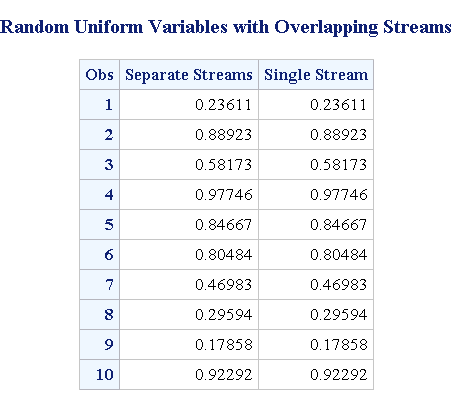

false., the seed is set to a processor-dependent value. true., the seed is set to a processor-dependent value that is the same each time random_init is called from the same image.

call RANDOM_INIT(repeatable, image_distinct) gfortran 9 or later, it might support the Fortran 2018 intrinsic subroutine RANDOM_INIT(). You didn't ask for it, but if your compiler is sufficiently new, e.g.
#Random numbers to call manual
See the linked gfortran manual for a simple example program test_random_seed Check the manual of your compiler version. Note that you can also call RANDOM_SEED() without any arguments at all and the result is implementation dependent, but will often randomize the starting point. get is used to receive the present state of the pseudorandom sequence. It is just an array of integers and is used to set the starting point of that sequence. Your main concerns is to give enough entropy (some "random" bits) into the number you put into put. They are integer arrays and size tells you how big those arrays are. In fact, the actual technical meaning of put and get depends on the internals and will differ between different compiler versions. It is INTENT(OUT) and the size of the array must be larger than or equal to the number returned by the SIZE argument. GET (Optional) Shall be an array of type default INTEGER and rank one. It is INTENT(IN) and the size of the array must be larger than or equal to the number returned by the SIZE argument. PUT (Optional) Shall be an array of type default INTEGER and rank one. It specifies the minimum size of the arrays used with the PUT and GET arguments. SIZE (Optional) Shall be a scalar and of type default INTEGER, with INTENT(OUT).
#Random numbers to call manuals
The meanings of the arguments of RANDOM_SEED() are just technical details and are given by the Fortran standard and described in manuals of many compilers, such as the gfortran manual. Calling RANDOM_NUMBER() then generates the numbers in the sequence. What RANDOM_SEED() does is setting this starting point of the sequence. When you have a starting point, you can generate the next pseudo-random number and then the next pseudo-random number and. They generate a deterministic sequence of numbers. Pseudorandom generators are all used in a similar way.

I will appreciate any comments that give me a little help and forgive me for writing shortcomings. What is exactly " size", " put" and " give" in the "RANDOM_SEED" command? I also find "SET_SEED", what is this command? What relation between pseudo-random numbers and the "RANDOM_SEED" command?Īre random numbers in Fortran exist in some batch and this command changes the batch or it ignores some number from the start to avoid creating the same random number? I find that Fortran creates pseudo-random numbers and not real random numbers. Also, I search on this site and find this: random_number() gives vastly different behavior between GNU and PGI Fortran compilers. I search on the net to find something to help me with this command and find this: RANDOM_SEED.
#Random numbers to call code
I search between the same code (to find efficient structure) and see they use the "RANDOM_SEED" command in it. Generating random number variables is necessary for sampling. I write a code based on statistics with Fortran.


 0 kommentar(er)
0 kommentar(er)
